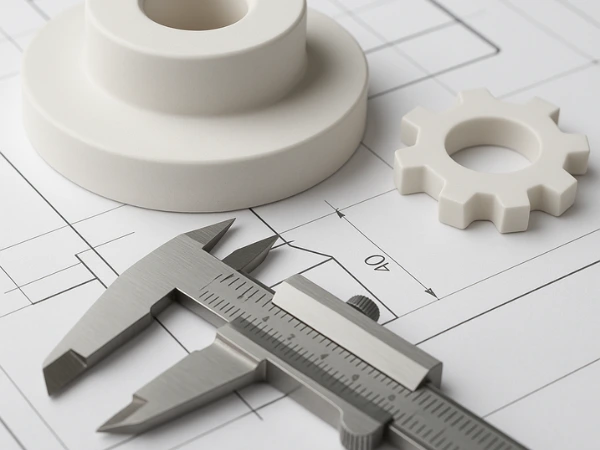Ceramic-compatible construction: A guide for mechanical engineers

Understanding the challenge
As a mechanical engineer, you are familiar with the scenario: a project is already in full swing, the design has been thought through, and the supply chains are established. Then new requirements arise—higher operating temperatures, chemical resistance, or longer service life. Ceramics often offer the ideal solution here, but they come with their own design rules.
The good news is that with the right understanding of ceramic properties, it is often possible to develop superior solutions that are more economical overall than conventional approaches.
Why ceramics must be designed differently
Ceramic materials follow different physical laws than metals or plastics. While steel can reduce load peaks through plastic deformation, ceramics react directly to overload by breaking. This property is not a disadvantage—it enables extreme hardness, wear resistance, and temperature resistance.
The design principle is therefore: prevent overload instead of tolerating deformation.
Common cost traps and how to avoid them
Problem 1: Subsequent design changes
Solution: Evaluate different material options in parallel during the concept phase. Comparing materials early on saves costly changes later on.
Problem 2: Unsuitable geometries
Solution: Avoid sharp inner radii and notches. Create smooth transitions between different wall thicknesses. These rules often lead to more elegant, functional designs.
Problem 3: Tolerance chain problems
Solution: Ceramic components are subject to shrinkage during the sintering process. However, this is predictable and can be taken into account in the design.
Construction rules for success
Optimize stress: Ceramics are exceptionally strong under pressure. Designs that favor compressive stress make optimal use of this potential.
Think through the geometry: Uniform wall thicknesses and smooth transitions reduce internal stresses. This not only leads to more reliable components, but often also to more aesthetic designs.
Avoid assembly stresses: Ceramic components require stress-free installation situations. Clever mounting concepts can even simplify the overall design.
The added value of early collaboration
Projects that incorporate ceramics from the outset benefit in several ways:
Technical: Optimal utilization of material properties instead of compromise solutions
Economic: Avoidance of expensive redesigns and tool changes
Innovative: Ceramics often open up design solutions that would not be possible with other materials
When is the ceramic approach worthwhile?
Ceramics are not the best choice for every application. As a rule of thumb, the more extreme the requirements (temperature, wear, chemical resistance), the more likely it is that the initially higher material costs will be offset by longer service life and lower maintenance costs.
Practical approach
- Early evaluation: Consider ceramic alternatives as early as the concept phase
- Seek expert advice: View ceramic manufacturers as design partners, not just suppliers
- Consider total costs: Material costs vs. service life and maintenance costs
- Use prototyping: Modern CNC prototyping processes make it possible to test different ceramic geometries without tooling costs. This allows you to evaluate the potential of ceramic solutions without risk, even in the development phase.
Result: Ceramics as a design opportunity
Ceramic-compatible design is not an additional complexity, but rather an extension of your toolbox. The exceptional properties of modern high-performance ceramics—from extreme hardness and chemical resistance to electrical insulation properties—open up solutions that cannot be achieved with conventional materials.
The key lies not in perfect ceramic expertise from day one, but in the willingness to consider ceramics as an equal option and to involve the right partners at an early stage. Your next innovative solution could start right here.
